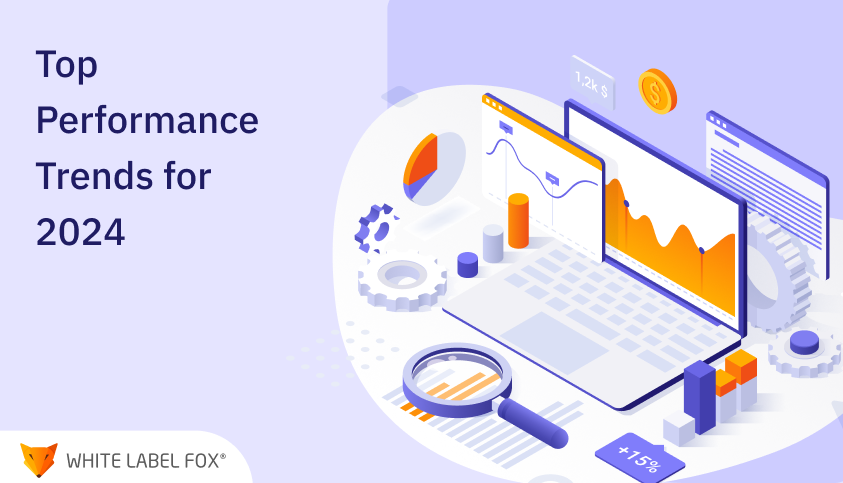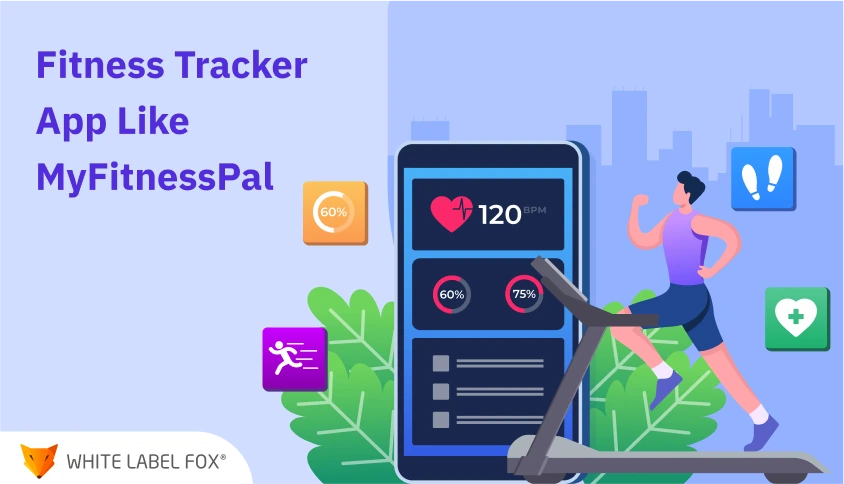In the thriving business and technology world, where competition is high, staying ahead of time is a prerequisite for success. The year 2024 is fast approaching, and we are witnessing several changes in the performance management arena due to technology upgrades, altering workplace atmospheres, and increasing employee expectations.
Within the last month, a study by crucial industry analysts has concluded that 85% of organizations are at the forefront of performance management initiatives to enhance employee engagement and productivity. This statistic highlights how performance management facilitates the creation of an optimal organizational culture and employee growth in the modern work environment to be competitive.
While exploring the top 10 performance management trends to monitor in 2024, we must be aware of the profound change that is defining the ways and methods of traditional performance evaluations and continuing discussions. It will be interesting to see how the rise of data-driven insights and the growing emphasis on continuous feedback loops could significantly impact the performance management system in the next year and beyond.
Come with us as we investigate the crucial trends transforming performance management and discover steps that can boost the possibility of organizational success.
A Glimpse into Performance Management

Source:
Folks RHPerformance management is one of the strategic approaches directed at ensuring individuals and teams in an organization achieve their set objectives through proper evaluation of the staff performance, offering feedback, and formulating strategies to enhance the effectiveness of individuals and teamwork.
- Performance management ensures the consistent improvement of employees’ engagement, effectiveness, and organizational situation.
- This includes defining performance expectations, tracking progress, pointing out improvement areas, and helping employees develop their strengths with incentives and rewards.
- The Gallup poll reveals that a business with high employee engagement will achieve 21% more profits.
- Deloitte researched and proved that companies with proper performance management tendencies are, on average, 40% more likely than above-average staff engagement.
Aligning individual goals and organizational purposes is crucial in performance management. By aligning employees’ personal goals and visions with the organization’s overarching direction, this convergence potentiates an environment for mutual progress.
Adopting a data-driven approach gives an organization the prerogative to do the right thing regarding performance assessment, decision-making, and resource investment. Such an approach makes performance management strategies effective, objective, and empirically based, increasing the possibility of achieving the desired results and sustainability.
Get in touch with us to develop an feature-rich performance management app to empower growth

Top 9 Performance Management Trends to Watch in 2024
Now, let’s dive into the details of several performance management trends that will determine the dynamics of this area in 2024. These trends, technological innovations, and revolutionary changes in the very concept of labor are driving dynamic and innovative performance management plans forward.
Millennials Leading the Charge
One of the most significant trends in performance management in 2024 is the high level of influence that the millennial generation has in leadership positions.
- The Deloitte survey shows that by 2025, millennials will constitute 75% of the world’s workforce, thus making their ideas and preferences the most crucial factor for guiding organizational strategy, especially in performance management practices.
- This generation demands transparency, multiple learning steps, and job growth perspectives, and based on these, agile performance management systems have evolved.
For example, employers like Google and Facebook have modified their performance evaluation approach to suit millennials’ expectations, focusing on frequent check-ins, skill development, and goal setting. With millennials rising all the ranks, they will undoubtedly leave a mark on how performance management strategies are designed by initiating a significant revolution favoring more people-oriented and flexible approaches.
The Rise of Mutual Criticism
Another key trend in 2024 performance management is mutual criticism to promote growth and development among them. The focus is not only on the communication process but also on the quality of feedback; in other words, the manager should receive and give timely and relevant feedback to their employees.
According to data provided by Harvard Business Review, organizations that allow people to send open feedback and criticize each other’s work are more likely to show their employees’ best performance and engagement level.
Organizations foster a culture of unceasing growth and accountability by providing a platform for employees to deliver helpful feedback to their colleagues and superiors.
Companies like Netflix perfectly illustrate this trend, using the 360-degree feedback model, where employees get feedback from their peers and supervisors. Incorporating mutual criticism into performance management practices makes feedback more diverse, comprehensive, and productive for individual and collective development.
Wellbeing and Work-Life Balance
Research by the World Health Organization (WHO) highlights that employees who successfully balance personal and professional life are likely to be happy, productive, and dedicated. Organizations realize that employees coping effectively with their private and professional lives beyond stressful situations reward the company the most.
Strategies like
- Flexible working hours
- Mental health programs
- Some organizations have embraced well-being initiatives as they work towards creating spaces that foster wellness.

Source:
Vercida GroupFor example, Microsoft’s “Wellbeing Wednesdays” provide employees with a weekday dedicated to their wellness, not interrupted by meetings or emails. This development goes beyond the typical benefits, introducing mindfulness, stress treatment, and work-life balance initiatives.
Investing in employee welfare can restore loyalty, reduce absenteeism, and, in most cases, increase overall performance and job satisfaction. In 2024, health and work-life balance will continue to be the focus of successful performance management strategies.
Adapting to Hybrid Work Culture
The rapid growth of remote and hybrid work models has led companies to change their performance management approaches in different workplaces.
According to a McKinsey survey, 70% of executives feel that remote and hybrid work will become permanent organizational features.
This trend underscores the importance of dynamic performance management techniques designed with the employees’ diverse working habits and locations in mind.
Companies utilize technology to ensure hassle-free communication, collaboration, and performance tracking among team members in dispersed locations. Performance metrics are shifting to be more about outcomes and deliverables than old measures like “time spent in the office hours.”
For instance, Twitter and Spotify have adapted performance management techniques that focus on outcomes instead of micromanagement. Employers agree with team members about the places and times they prefer working at to achieve the best goals. Providing the team with hybrid flexibility contributes to better work-life balance and helps companies attract a worldwide talent pool and increase creativity.
Transparency
Transparency in performance management means identifying all employees’ tasks, goals, feedback, and decision-making processes. According to a Gallup study, openness in communication is among the significant factors contributing to employee engagement and efficiency.
Organizations are embracing transparency in different performance management areas, i.e., communicating clearly performance goals and metrics, offering feedback frequently, and involving employees in all the decision-making processes. This transparency drives a spirit of possession, accountability, and success of business targets.
Buffer and HubSpot are two companies leading in radical transparency by revealing company goals, financial information, and employee feedback. Transparency thus upgrades the level of trust and provides employees with the limited information required to participate in discussions of issues that affect their organization.
Consequently, companies that make transparency the focal point of performance management will enjoy increased employee engagement, retention, and overall productivity, creating a culture of openness and productivity.
The Rise of Freelancers
In the USA alone, freelancers make up about 34% of the workforce, a number that is inspired by the advancement in technology, the rise of freelance platforms, and the changing preferences of both workers and employers.
Organizations rely on freelance talent to get help with skills that they don’t have, scale their workforce as projects require, and they can access a vast international talent pool. This phenomenon is redefining the whole concept of performance management.

Source:
DemandSageAt the same time, companies continue to adjust themselves to managing a diverse workforce that simultaneously includes full-time employees, independent contractors, and freelancers.
Freelancer performance management strategies are being redesigned to accommodate all aspects of the freelance world, such as clear communication, goal alignment, and project-based evaluations. Technology-enabled software platforms created to facilitate collaboration, track progress, and provide feedback to team members are no longer differentiated by whether these teams are internal or external.
For instance, websites like Upwork and Freelancer constitute a massive pool of potential clients. Such platforms play a crucial role in the engagement between freelancers and companies, thus enabling conciliation projects, communication, and payment services. Organizations that are ready to apply freelancers can increase the agility of their work, access to their specialized knowledge, and creativity in their competition.
Conduct One-to-One Meetings with Staff
Such meetings serve as a platform for information sharing, creating personal bonds, and bridging the gap between personal agendas and the larger organizational goals. These meetings allow managers to give individual feedback, set professional development objectives, discuss difficulties, and highlight achievements.
Organizations appreciate that this format stimulates their employees’ involvement and improves their loyalty to the company. They are creating frameworks for individual meetings to make them helpful, relevant, and focused on short-term and long-term objectives.
For example, companies like Salesforce and Adobe utilize one-to-one feeds as a principal constituent of their performance management strategy. These conferences cover job-related subjects, relationship-building, employee necessities, and a continuous improvement culture.
Data-driven Decision Making
One key trend likely to determine the future of performance management is data-driven decision-making. Data analysis has become indispensable for organizations in different sectors to gain insights and improve performance management strategies.
Data-driven decision-making is not a one-time process. It’s a journey of continuous improvement. By obtaining, perusing, and interpreting relevant data, you can produce actionable insights that enable your organization to meet strategic objectives. This strategy lets you make informed decisions, detect patterns, predict results, and unendingly improve your processes.
For example, to track KPIs, identify areas for improvement, and achieve a fit between individual goals and organizational objectives, the organization can use data analytics tools at the level of performance assessment. Data analytics is a powerful tool for businesses to measure performance, identify patterns and trends, and plan strategically to improve their business further.
To be successful, performance management strategies must incorporate a data-driven approach. This strategy uses different technologies and analytics tools to convert data into an application-ready form.
With this strategy, organizations have the power to not just improve their efficiency and increase worker retention, but also to gain a competitive edge. As the business landscape continues to change rapidly, data-driven decision-making can help you maintain your competitiveness and stay ahead of the curve.
Mobile Workforce Revolution
The mobile workforce is forecasted to impact future performance management strategies significantly. Meanwhile, mobile technologies and remote work capabilities have been leapfrogged by companies that realize mobility is crucial for productivity, flexibility, and engagement.
Mobile technology has revolutionized how employees work, collaborate, and access information. Analysts at IDC concluded that by 2025, about 70% of the US workforce will be mobile. Consequently, the transition of work towards bringing mobile devices to work environments will undoubtedly be seen.
Organizations employ mobile technology to speed up performance management functions, facilitate dialogue, and empower employees to work remotely. Mobile apps and platforms allow employees to access performance metrics, receive feedback, set goals, and participate in ongoing training and development activities.
These applications, like BetterWorks and 15Five, have an interface that allows employees and managers to conduct performance reviews, monitor progress, and communicate in a friendly way, even if they are located in different places.
Organizations now prioritize mobile users so employees can use their smartphones and tablets smoothly for performance-related activities and support materials. By fostering mobility, organizations ensure effectiveness and collaboration, can remain competitive and can appeal to talented people in a rapidly changing environment of globally mobile workers.
Navigating Tomorrow: Evolving Trends in Performance Management
A few disruptive features will overhaul the performance management environment as we progress.
- A fundamental change is the growing influence of artificial intelligence (AI) and machine learning (ML) technologies that integrate.
- They will revolutionize data analysis on performance, giving more refined outcomes, prediction insights, and individualized recommendations to boost employee growth and overall company performance.
- Along with this, the future of performance management will highlight the ability to adjust and adapt more.
- Organizations should be governed by flexible business models that can adjust to various work arrangements, the constant demands of employees, and sprawling technological advances.
- This comprises cultivating a culture of ongoing learning, feedback, and transformation where employees are encouraged and granted the opportunity to control their development while playing a vital role in the organization’s objectives.
As we walk the cooperative path of performance management, changing circumstances, adopting technology, favoring transparency, taking care of employee wellness, and creating a culture of permanent improvement will be critical points for success.
With the ability to change with circumstances, respond promptly, and put people first, organizations can tackle issues and opportunities by creating long-term growth and innovation.

















